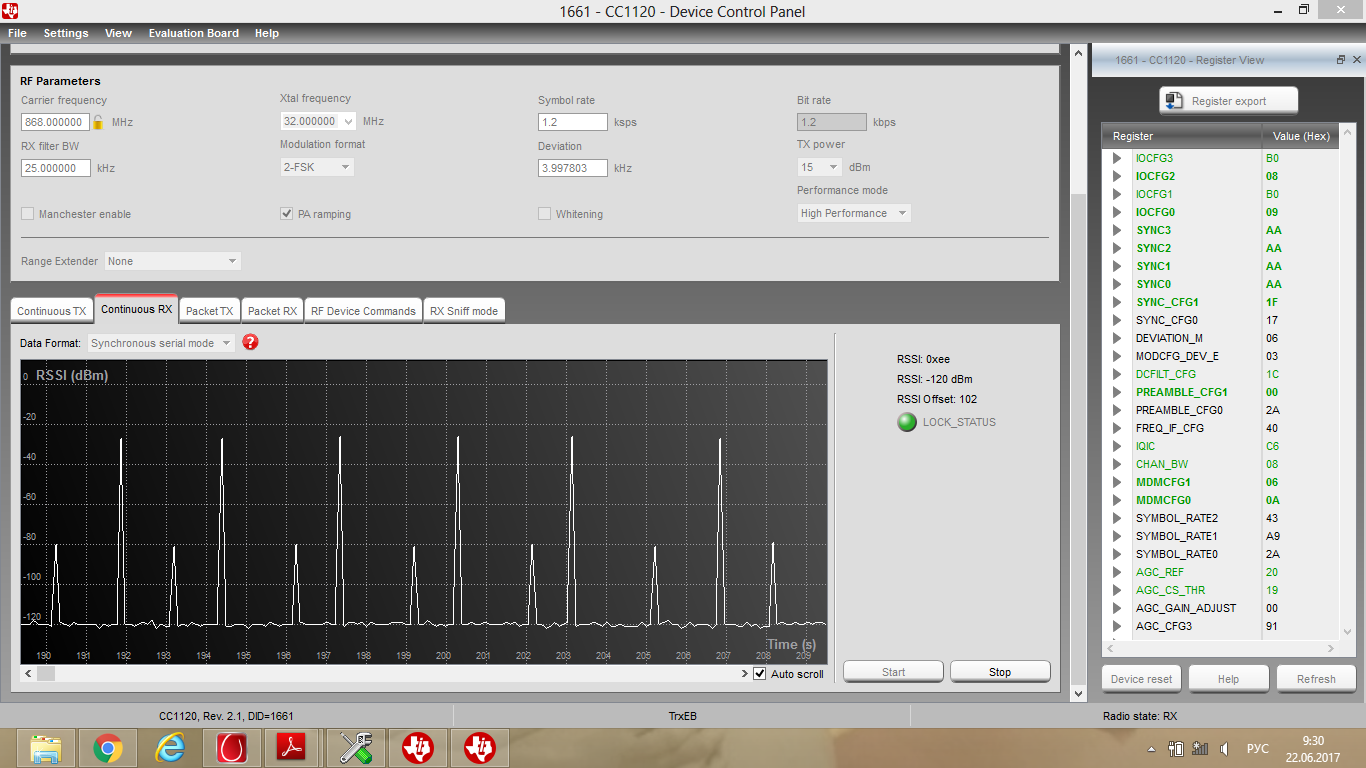Hello Team!
My customer have questions about CC1120 and Packet sniffer:
They have made their own module with CC1120 (the copy of CC1120EM)
The only difference is that they have added option to use ceramic smd antenna.(So it can be an external antenna or the smd antenna)
They use CC1120DK(SmartRFTrxEB) to test their design. Their module connects and works fine.
Also they make tests with their own host board. As the reference firmware they took source code swrc253e cc1120_tx_sniff_mode from the TI's site.
They adjust it to make one packet send per 3 seconds.
In the attachment you have see screenshot from the SMARTRFSTUDIO.
Low level signal is their device. High level signal is the SmartRFTrxEB with the RXSniffTest mode. (packets sends on button)
Why do their signal has so much lower power?
They have tried to export registers from the SMARTRFSTUDIO and it didnt improve the signal power.
If the first byte of the packet will not be equal to the number of bytes in packet the signal will disappear from the graph.
Also they have tried to use TIPacketsniffer. But it dont get packets even when they use 2 SmartRFTrxEB with TI's modules СС1120EM
Ilya.


